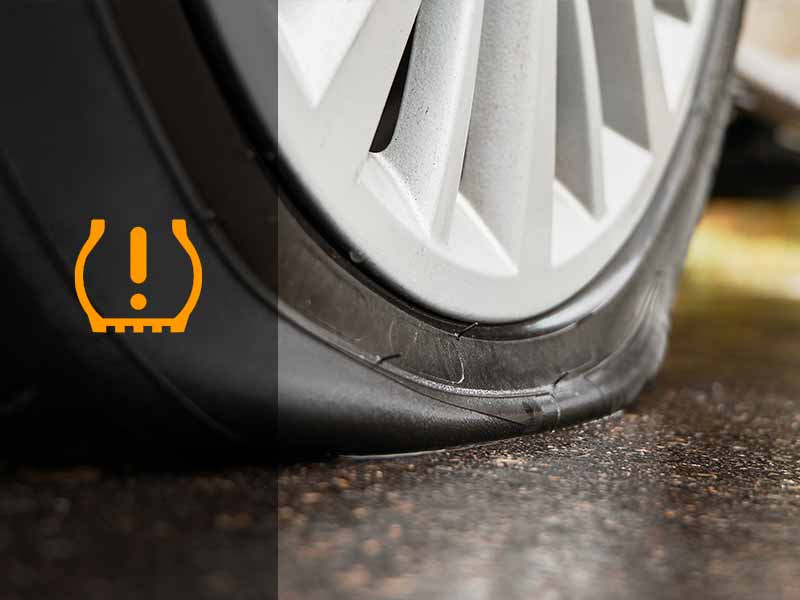Since 2008, all passenger cars and light trucks have been required to have a tire pressure monitoring system included when they are sold. This has greatly reduced accidents related to under-inflated tires, but the tire pressure light that these systems rely on can sometimes be a little confusing.
In this article, we’ll explain the different reasons your low tire pressure light can come on, what it means when it’s flashing, and what to do when the light comes on.
Tire Pressure Light
When the Tire Pressure Light is lit, it means there are one or more tires with air pressure that has drop by 25% or more than the recommended pressure listed on the tire information sticker in your driver’s door jamb.
If the Tire Pressure Light flashes for 60 to 90 seconds when you start your vehicle, it means there is a problem with the tire pressure monitoring system. The most common cause is a dead battery in one of the TPMS sensors.
Unfortunately, many people don’t realize their TPMS is designed only for emergencies and not to replace regular tire pressure checks. Since these systems only alert when the air pressure in one or more tires has dropped by 25% or more, you could be driving on under-inflated tires, which will shorten their life, reduce performance, and reduce fuel efficiency.
Let’s take a closer look.
What Does It Mean When The Tire Pressure Light Is On?
Your tire pressure monitoring system is designed to alert you to a dangerously low tire pressure situation. When the system detects air pressure in one or more of your tires is too low, it will turn on the tire pressure warning light to inform you that there is a problem that needs to be checked immediately.
Sometimes this problem is severe and will require you to correct the problem before continuing to drive. Other times the situation is less severe, and you can continue driving until you reach a safe location and resolve the issue.
What Can Cause A Tire Pressure Light To Come On?
There are two causes for a tire pressure warning light to be illuminated on your dashboard:
- Low Pressure In One Or More Tires
- A System Failure Or Error
Low Pressure
Low pressure in one or more tires will trigger the TPMS warning light to come on. Causes of low air pressure in a tire can be for many reasons:
Tire puncture
Punctures can cause a catastrophic tire blowout or a slow leak. Sometimes the object that causes the puncture will remain embedded in the tire and can cause noise.
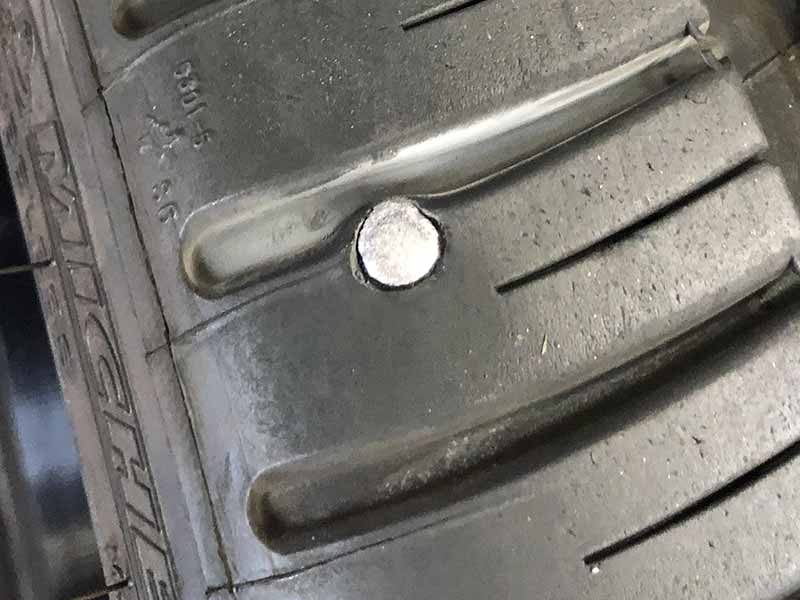
Punctures in or near the sidewall of your tire can not be safely repaired, which means you’ll need to replace the tire. Punctures toward the middle of the tire tread can be patched safely.
Cold Weather
When the weather turns colder, it’s common for your tire pressure warning light to trigger. The reason is that cold air contracts and hot air expands. When your tires are hot, your tire pressure will increase. On cold days it will decrease.
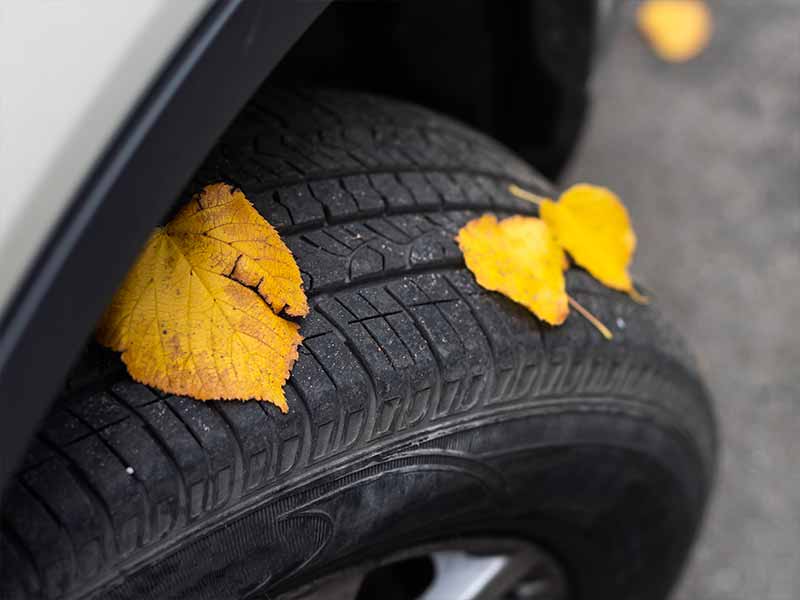
A drop of 10 degrees equals a drop in air pressure of 1 psi. While cold temperature alone doesn’t usually cause enough change in air pressure, if your tire pressure is already a little low, this can be enough to cause the warning light to illuminate.
Wheel Damage Or Manufacturing Defect
Potholes and curb strikes can cause damage to the wheel and make it difficult for the tire bead to maintain a proper seal. This can lead to a slow leak or a sudden dramatic loss of air pressure.
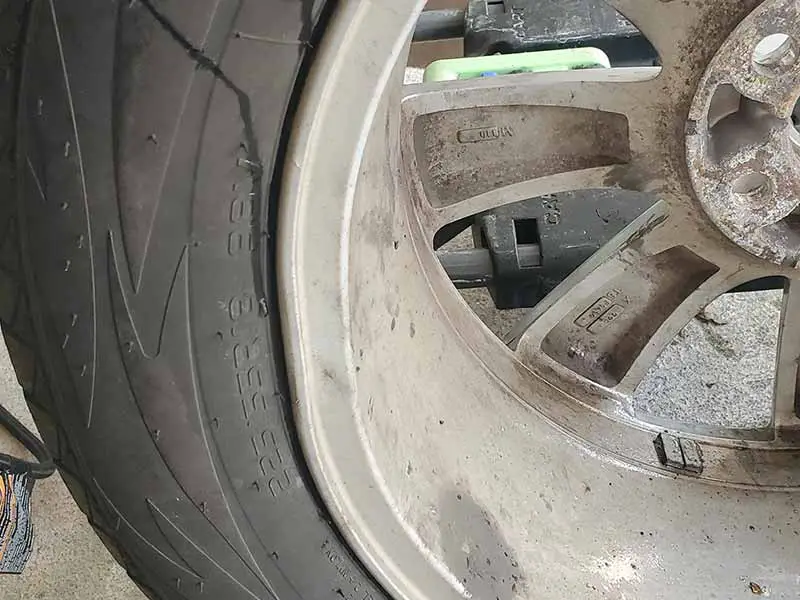
Defects such as a pinhole during casting or poor fitment of multi-piece wheels can allow air to leak very slowly over time.
Damaged Or Improperly Installed Valve Stem
The valve stem is a vulnerable point that can be more easily damaged, allowing air pressure to escape. While very durable in general, it’s not as rugged as the rest of the wheel.
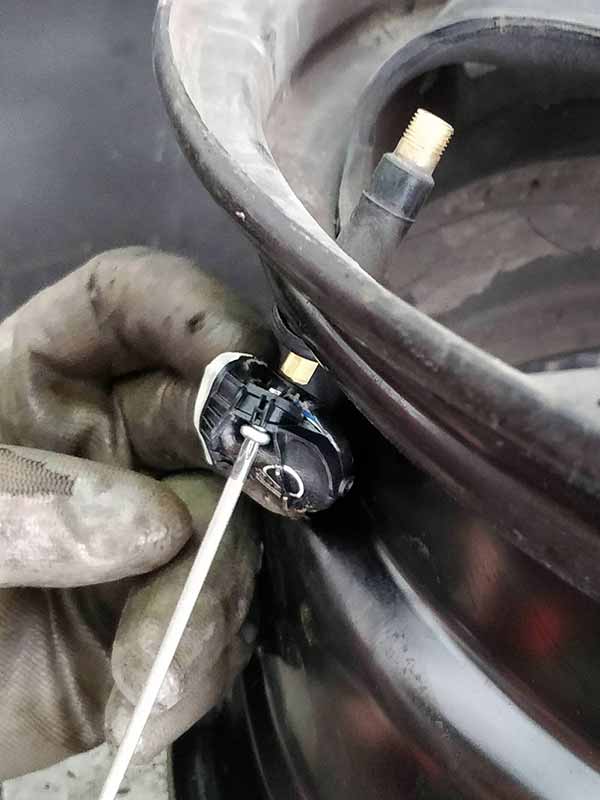
Proper installation is also important to help ensure a good seal around the valve stem. If not installed properly, slow leaks can develop and cause a pressure warning light to be triggered.
TPMS Problems
Various tire pressure monitoring system failures can also trigger the tire pressure warning light to display in your instrument cluster. By far, the most common type of TPMS failure that you are likely to experience is a dead battery in one of the individual tire pressure sensors.
TPMS sensor batteries have a typical life span of 7 to 10 years. At this point, they can begin to have trouble maintaining a proper wireless connection with the TPMS computer or report incorrect pressure readings. Eventually, they will stop communicating altogether.
While a dead sensor battery is the most common problem, other system problems will also trigger the warning light. Less common issues such as improperly programmed sensors, wiring problems, or damage to an individual sensor will also cause the light to come on.
How Low Does Tire Pressure Have To Be For The Light To Come On?
All tire pressure monitoring systems activate the TPMS light when the pressure drops by 25% or more. These systems are designed to notify the driver of a serious problem with the air pressure in one or more tires.

Because the amount of air pressure drop in your tires required to trigger a warning is so significant, you should still check the pressure in your tires monthly to ensure your tires wear evenly, don’t reduce fuel efficiency, and last as long as possible.
Your tires will slowly lose pressure over time and eventually need to add air to bring the pressures up to the recommended amounts listed in the driver’s door jamb on the tire information sticker.
Air pressure also fluctuates with temperature. Every 10 degrees of temperature change will cause a 1 psi change in air pressure inside your tires. When the temperature goes up 10 degrees, the pressure will go up 1 psi. When it drops 10 degrees, it will drop 1 psi.
This is why it’s common for your low tire pressure warning light to be lit when you get in your car or truck on the morning of the first cold snap.
A sudden temperature drop can easily make up for the difference when combined with the previous loss of air accumulated over the last several months. More than a cold snap is required to trigger a drop of 25% in air pressure. When combined with the fact that most people don’t regularly check the pressure in their tires, it is usually enough to push it over the limit.
Why Is My Tire Pressure Light Blinking?
When your TPMS light flashes for 60 to 90 seconds immediately after starting your vehicle and then remains solidly lit, it means there is a problem with your TPMS. As mentioned previously, the most common culprit is a dead battery in your TPMS sensors.

Any system problem that prevents it from properly interpreting the air pressure in your tires can cause the light to come on and blink during startup.
It’s common for the short flashing sequence to go unnoticed, and the driver assumes one of the tires must be low on pressure. This often leads to confusion when they check their tires, and all of them are fine.
How To Reset The Low Tire Pressure Light
The most common method for resetting your tire pressure light is to inflate your tires to the correct pressures listed on the tire information sticker in the driver’s door jamb and then press the TPMS Reset button.
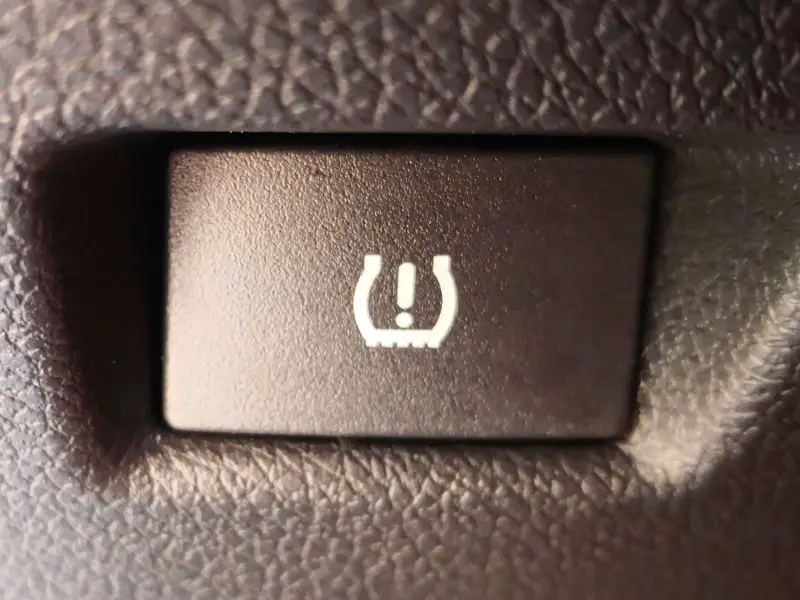
However, this procedure will vary depending on the type of TPMS and vehicle manufacturer implementation. The two kinds of TPMS are “Direct” and “Indirect.”
Direct TPMS
“Direct” TPMS uses dedicated wireless sensors in each tire, usually located at the base of the valve stem. This system is the most popular because it allows the driver to check the current tire pressure in each tire right from the driver’s seat.
Many “Direct” TPMS don’t require pressing a reset button, and the system will figure out that the pressures have returned to the correct amounts. This will take some time since the sensors remain “asleep” when the wheels aren’t spinning to conserve battery life.
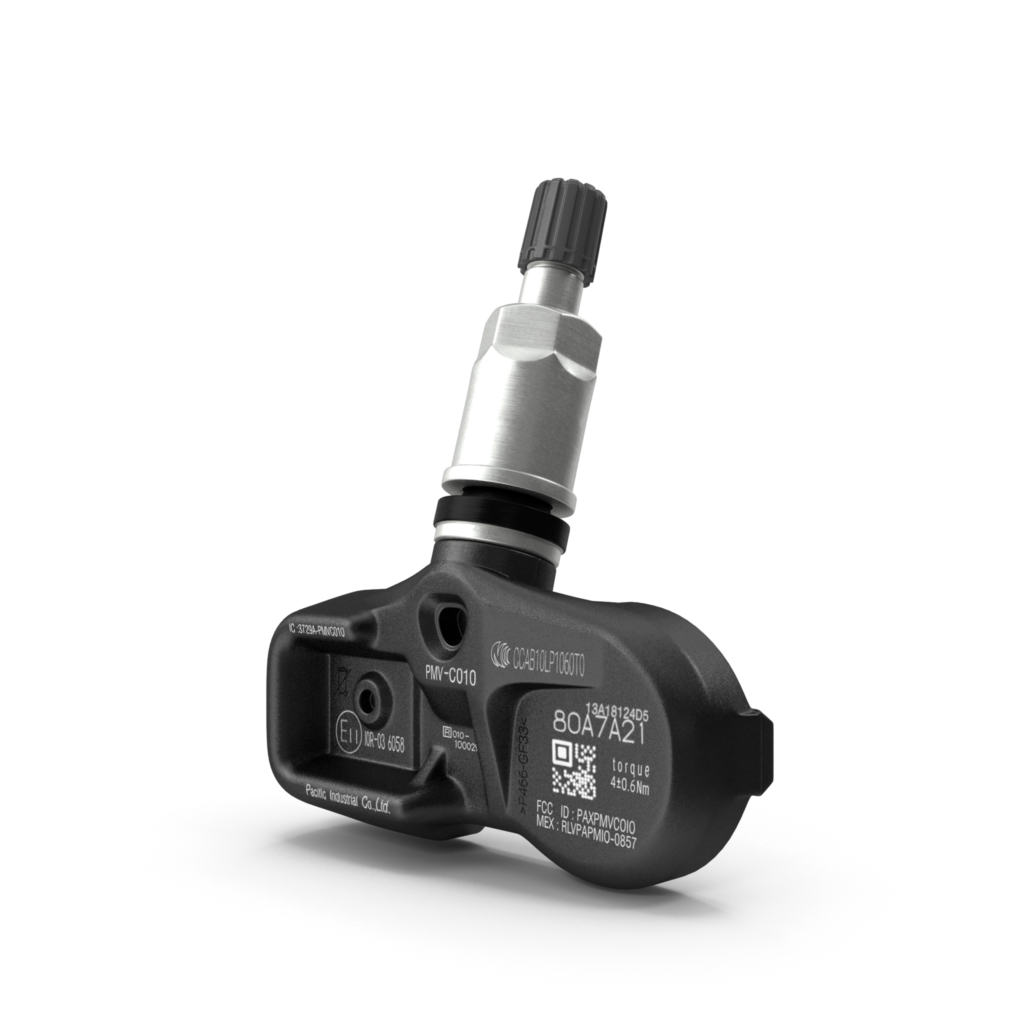
Indirect TPMS
“Indirect” TPMS uses the wheel speed sensors that the anti-lock braking system uses to determine when a wheel begins skidding. This type of system compares the wheel speed of each tire to the others. It also compares the established baseline. The system does this to infer whether there has been a significant loss of air pressure in one of the tires. It can’t interpret individual actual tire pressures but can reliably determine if there is a tire pressure problem and alert the driver.
“Indirect” TPMS often requires pressing the reset button to tell the system to re-establish a baseline wheel speed. Even though no sensors are “asleep,” it will take the system some time to measure the wheel speeds and confirm the pressures have been restored.
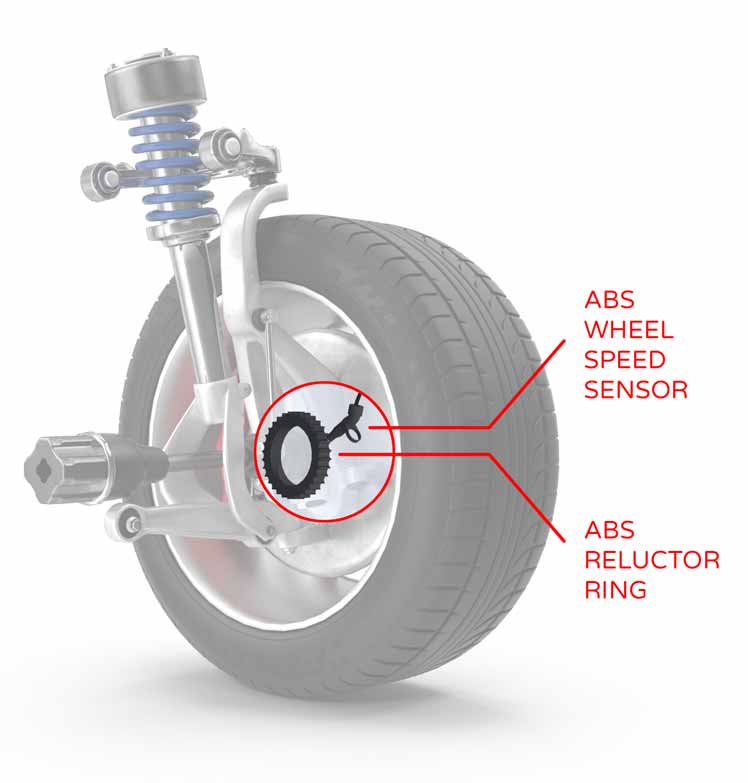
Why Won’t My Low Tire Pressure Light Go Off?
The most common reason a low tire pressure light won’t go off is that low tire pressure wasn’t the reason for the light coming on. A problem with the tire pressure monitoring system can also trigger the TPMS warning light to display.
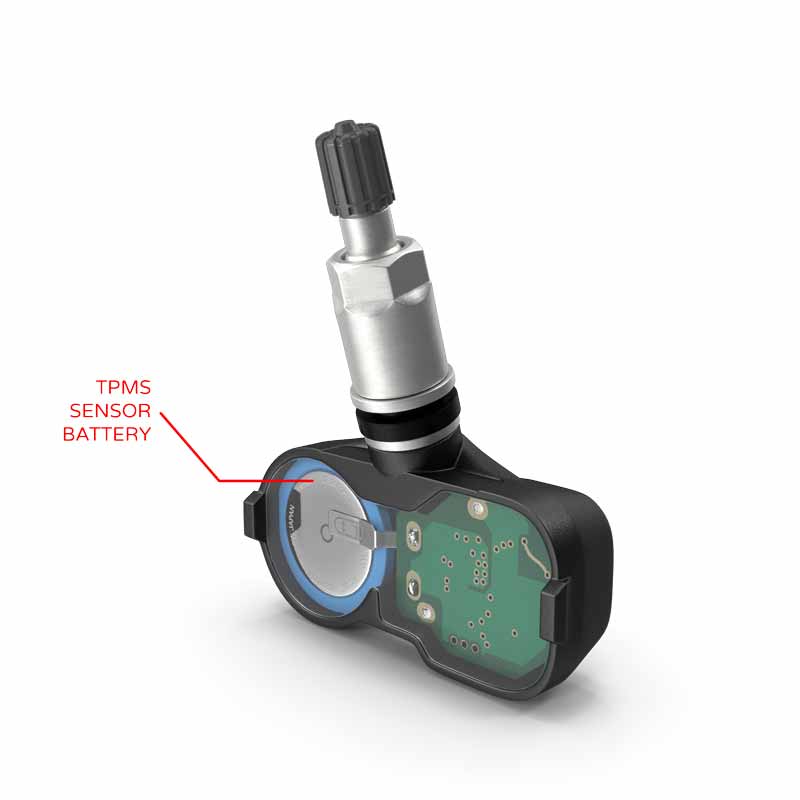
When there is a problem with your TPMS, the low-pressure warning light will flash for 60 to 90 seconds when starting your car or truck and then remain lit until you turn it back off. This can be unclear if you’re unaware of the difference between a blinking light and a solid light or don’t notice the short blinking sequence.
This may not be the only reason; however, it is the most common. The following list includes some of the possible reasons your TPMS warning light remains illuminated:
- A slow leak
- You need to press the TPMS Reset button
- A new sensor is not programmed correctly
- Dead or dying sensor battery
- Damaged sensor
- Faulty wiring with the TPMS computer
Can I Drive With The Low Tire Pressure Light On?
The low tire pressure light does not mean that you shouldn’t drive, but you should ensure the tires are correctly inflated and that there don’t appear to be any punctures before driving if the light is on.
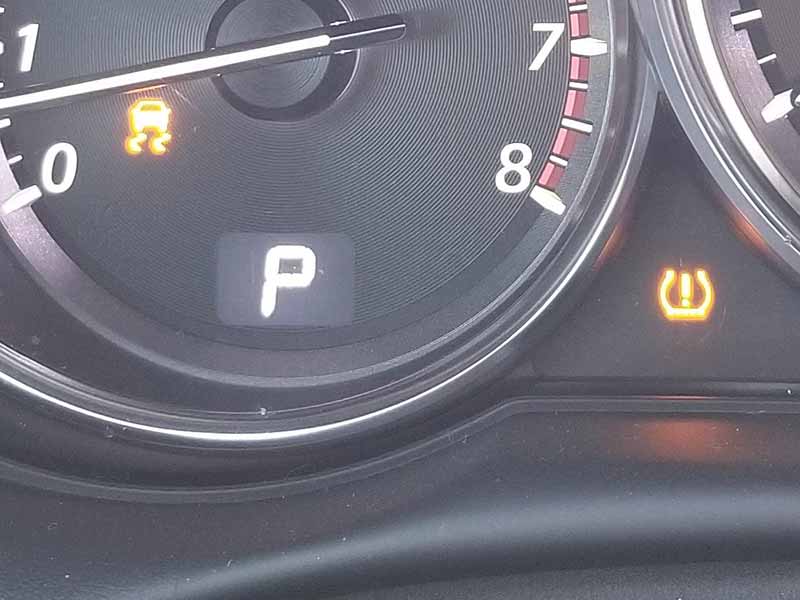
Sometimes the system can fail and need service itself. If this is the case, you should address the problem with your TPMS as soon as possible. Also, keep a close eye on your tire pressures in the interim.
If your TPMS light is on and your tire pressure is low, you should inflate your tires to the correct tire pressures listed on the tire information sticker in the driver’s door jamb before continuing to drive.
Effects Of Driving With Low Tire Pressure
It’s important to avoid driving when your tires have significantly low air pressure. If your tires are just at the point of triggering the TPMS warning light and have only lost 25% of the recommended tire pressure, you can safely continue to drive, but you should address the problem as soon as possible.
Driving with under-inflated tires reduces performance, reduces fuel efficiency, and shortens the life of your tires.
If your tires are significantly under-inflated or flat, driving on them will ruin them very quickly. When driving for even a short distance, the stress of the sidewall flexing well beyond its design limit will cause permanent damage that will require replacing the tire.
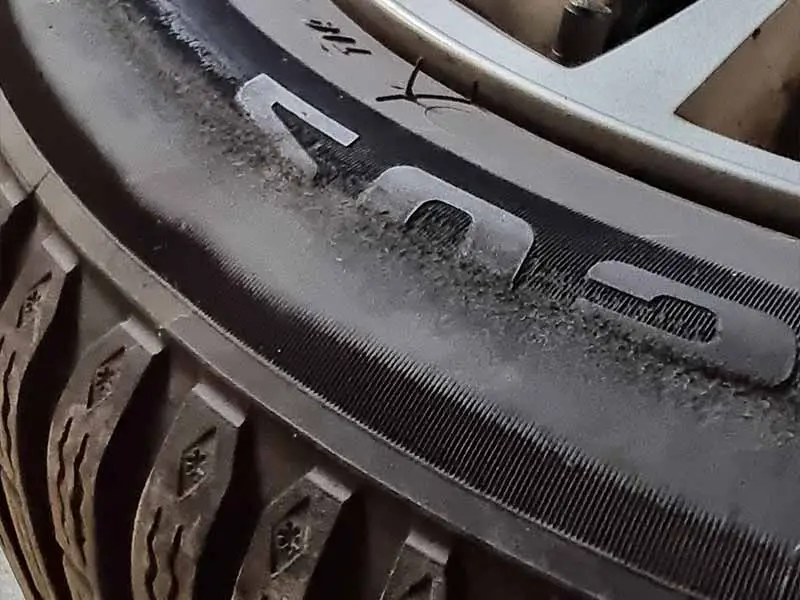
Driving at highway speeds with significantly low tire pressure is extremely dangerous. Not only will it cause irreparable damage to the tire, but it can quickly lead to a catastrophic blowout.
I’ve witnessed more than one accident where a car in front of me on the interstate had very low pressure in a tire. In each situation, the tire began to smoke from the intense heat and eventually ripped apart, causing an accident.
In the first accident, the driver maintained control and managed to make it to the side of the road. The second driver wasn’t as lucky. He lost control when the tire blew apart, spinning sideways and directly into a Jersey barrier. Fortunately, he appeared to be okay afterward, and the other drivers near him were able to avoid running into him. His car, however, was likely a total loss.
I recommend purchasing a portable air compressor and keeping it in your trunk for situations like this if you can’t inflate your tires while on the side of the road or in your driveway, you can damage your tires or put yourself at risk of trying to drive to a gas station with a functioning air pressure pump.
Resources
Below are some links you may find helpful when learning about tires
- What you need to know about tire-pressure monitoring systems – Edmunds
- What is a tire pressure monitoring system (TPMS) – Firestone
Final Thoughts
It’s important to take the low tire pressure warning light seriously to avoid a tire failure. It doesn’t mean you shouldn’t drive when the warning light is on, but you should ensure that you have the correct tire pressure to continue driving safely.
Keeping a portable air compressor in your trunk is a very wise precaution. It can help you prevent damaging your tires by having a convenient way to keep them properly inflated without needing to find a gas station with a working air pump.
Even driving a short distance with air pressure that is too low can quickly ruin your tires and can lead to a catastrophic blowout.
Good luck and happy motoring.
